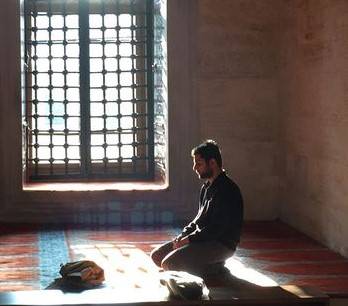Interfaith Insight - 2024
Permanent link for "Into the Heart of Islam," by Kelly James Clark, Author and Former Kaufman Interfaith Institute Staff on May 28, 2024
I remember the first time I flew into Istanbul. Passing over the old city, formerly known as Constantinople, I saw massive mosques. The Fatih Mosque, construction completed in 1470 AD, displays the magnificence and solemnity expected of an edifice named in honor of Mehmet the Conqueror, the Ottoman sultan who conquered Constantinople in 1453. Its location, on the burial grounds of Roman Emperor Constantine, made a religious and political statement about God’s favor shifting from the Holy Roman Empire to the Islamic Ottoman empire; God, the Conqueror’s inspired architects were saying, is on our side. The indomitable Fatih Mosque seems more castle than cathedral.
Next in view: Suleymaniye, an imperial mosque commissioned by Suleiman the Magnificent, the tenth and longest-reigning Ottoman sultan (d. 1566).
As we approached the seaside, I saw the Hagia Sofia, first built in 537 by Emperor Justinian I as the official cathedral center of the Holy Roman Church. The Hagia Sofia was converted into a mosque by Mehmet the Conqueror in 1453. By destroying or plastering over the Christian art and icons and redecorating with Islamic symbols, the Conqueror was stating that God’s heavenly power and authority are now aligned with his/Islam’s earthly power and authority.
Again, these mosques seem more castle than cathedral.
This flyover, given a little bit of Wikipedia history, played into my anti-Muslim bias that Islam was at heart a conquering religion, which advanced more by the coercive power of the sword than the attractive power of righteousness and mercy.
The Blue Mosque, neighbor of the Hagia Sofia, is a dazzling masterpiece, of a decidedly different nature from the monuments to power. While constructed by Sultan Ahmet I as an assertion of Ottoman power, its cool and serene interior—20,000 handmade blue tiles with over fifty different tulip designs—is more an invitation to peace than an anthem to war. While only the Sultan was allowed to enter the mosque on horseback, the chains at the door forced the Sultan to bow in humility before Allah. As you enter, you remove your shoes, bow in humility, and, as your eyes adjust to the lack of sun, sense serenity and peace.
I had secured permission from Istanbul’s Grand Mufti to film a Friday prayer service, a privilege typically denied to non-Muslims. Since the Friday prayers constitute Islam’s pre-eminent form of public worship, the Blue Mosque was packed, with an undulating sea of thousands of people hip-to-hip in neatly spaced rows. In response to a series of calls in Arabic, everyone folded hands, bowed, kneeled, touched their foreheads to the ground, and stood up again in remarkable unison. Since I was not filming, I found myself standing, embarrassed, in the sea of these very prostrate worshippers.
Given the serenity of the Blue Mosque, the attraction of true devotion, the wafting Arabic, and the power of synchronized activity, I found myself strangely moved to pray with these strangers. So, discretely glancing to my left and to my right for cues and clues, I folded my hands, bowed, knelt, touched my forehead to the ground, and stood up again in passable unison. Inside the Blue Mosque, surrounded by thousands of strangers, acting in unison and in response to the lilting recitation of a sacred text, I felt, for the first time, the attraction of Islam.
I had once thought that Muslim rituals were empty and rote, that Muslims were just concerned with impressing God with the quantity of their prayers and the position of their bodies. But, as I spoke with the Muslim participants, I learned that, like Christians, Muslims are more concerned about a faithful heart than a prostrate body. And I felt the compassion contained in countless repetitions of love:
In the Name of Allah, the Most Compassionate, the Most Merciful.
Praise be to Allah, Lord of the Universe,
the Most Compassionate, the Most Merciful!
I’ve taken you from the exterior of Islam into the heart of a Muslim. We started the journey with fortress-like mosques, reinforcing my bias that Islam is a conquering, not a peaceful, religion. I then took you inside a mosque, a place of peaceful architectural repose. Inside that mosque, I reported on the synchronous ritual behavior of thousands of people, behavior that invited me in. Finally, I shared a conversation I had with Muslims about how bowing and scraping conduce to humility, righteousness, and mercy.
I offered repeated iterations of exterior-into-interior, taking you from mosques to bodies and, finally, into hearts of love.


[1716913477].jpg)
